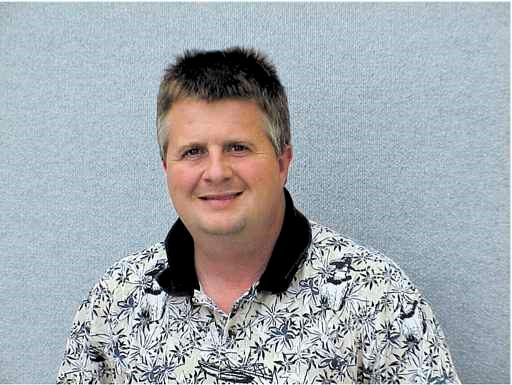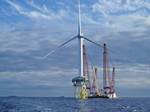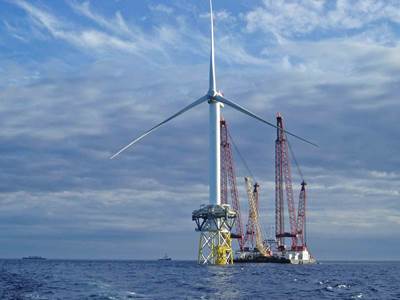CF 2011: Comment on end-markets and initiatives
Six speakers at the Carbon Fiber 2011 conference (December 2011) report on their organizations' activities in the carbon fiber market.
Representatives from the U.S. Department of Energy (DoE) and Oak Ridge National Laboratory (ORNL, Oak Ridge, Tenn.) teamed up to present “Low-Cost Carbon Fiber for Emerging Energy Applications.” The two government entities have been trying for many years to make carbon fiber from lignin, polyethylene, polyolefin and other nontraditional precursor materials. ORNL’s Dr. Cliff Eberle described his group’s carbon program, consisting of development of viable precursor materials, development of the technology for converting the precursor into fiber, development of design and manufacturing capabilities for high-volume composite applications and, finally, finding ways to transfer the technology to industry partners.
The group recently purchased a new manufacturing line from Harper International (Lancaster, N.Y.) that is highly flexible and able to handle any type of precursor material in either fiber or web format, says Eberle, with output of up to 25 metric tonnes (55,116 lb) annually (based on 24K fiber). The line can produce fiber sizes from 3K to 80K and is also capable of bicomponent and hollow fibers. It should be producing fiber in early 2013. ORNL also will install a melt-spun carbon fiber line in the coming year.
ORNL’s field technical manager for transportation materials research David Warren spoke next, identifying the impacts that low-cost carbon fiber will have on the automobile industry. Although carbon composites can be used to achieve a 10 percent mass reduction in a vehicle, for a 7 percent increase in fuel economy, carbon fiber involves the greatest cost penalty for that improved performance when compared to other materials, such as aluminum or magnesium. On the other hand, he said, carbon composites can deliver excellent crash protection, if they are well designed. Warren estimates the market demand for carbon fiber at 158 million lb (71,668 metric tonnes) per annum. He added that because high-volume applications are so cost-sensitive, fiber with moderate performance, even less than 250 ksi/6.89 MPa, will fill the bill.
Keynoter Bruno Beral, head of Structure Policy and Development for Engineering Structure at Airbus (Toulouse, France), spoke about the aircraft manufacturer’s composites innovations, both current and future. His main point was that “no single material can do it all,” and he made it plain that Airbus wants to maintain the competition between metal and composites to get the best of both materials (for more, see CW conference director Scott Stephenson’s comments on Beral’s presentation in “Looking ahead ...." under Editor's Picks," at top right). On Beral’s wish list are a new matrix material — not epoxy — that performs better than existing resins, plus more automation in manufacturing, and elimination of fasteners. Beral says the next phase of aircraft design also will demand multifunctional advanced materials, including composites, that integrate structures and systems — that is, true smart structures.
Dan Ott, the global strategic account manager for advanced composites at Web Industries Inc. (Marlborough, Mass.), gave an interesting presentation on the topic of slit prepreg tape. Web is a well-qualified supplier of slitting services, that is, taking rolls of unidirectional prepreg and slitting it to very tight tolerances for use on automated tape laying machines and in fiber placement processing. As you might expect, the process is tedious, with very little room for error, and requires a lot of effort to produce a quality product, because of the “organic” nature of carbon fiber. After describing how his company deals with fiber alignment, production speeds, splicing (if allowed), fiber fuzzing and more, and the care that’s required, he raised some interesting questions. To increase use and acceptance of carbon fiber and composites in general in wider applications, would the industry be willing to accept slightly lower tolerances for higher throughput? Can machine designers work with material suppliers to avoid issues during layup? Can the industry develop a wider range of materials, including out-of-autoclave prepregs or thermoplastics, for broader application?
Vanni Tomaselli, a research and development engineer with Waves S.A. (Luxembourg) spoke about the huge emerging market for carbon fiber in marine compressed natural gas (CNG) transport and storage. Noting that oil and gas engineers are the most conservative, his company’s focus is on large pressure vessels for the CNG market. In one hypothetical case, a ship outfitted with 143 carbon fiber/epoxy pressure tanks — each 9m/29.5-ft long with a 14.5-metric-tonne (nearly 31,970-lb) capacity — could carry 50 million ft3 (almost 1.416 billion liters) of natural gas and could consume 3.4 million lb (1,542 metric tonnes) of 30K carbon fiber. (The required amount of carbon fiber might increase or decrease depending on the scenario and if less stringent safety factors are employed in making the pressure vessels.) Tomaselli reported that his company is working with Spencer Composites (Sacramento, Calif.) on filament winding technology and noted that a tank project will begin in early 2012.
Dieffenbacher North America’s (Windsor, Ontario, Canada) sales manager Christian Fais made an argument for high-pressure resin transfer molding (RTM) of composite parts. The process developed by Dieffenbacher uses a proprietary preforming step and very high mold pressure (60 to 100 bar or 870 to 1,450 psi), resulting in improved impregnation, shorter cycle time and excellent surface properties. Fais reports that the company is close to a total part cycle time of only three minutes, making the process feasible for automotive parts.
Related Content
The potential for thermoplastic composite nacelles
Collins Aerospace draws on global team, decades of experience to demonstrate large, curved AFP and welded structures for the next generation of aircraft.
Read MoreASCEND program update: Designing next-gen, high-rate auto and aerospace composites
GKN Aerospace, McLaren Automotive and U.K.-based partners share goals and progress aiming at high-rate, Industry 4.0-enabled, sustainable materials and processes.
Read MoreWelding is not bonding
Discussion of the issues in our understanding of thermoplastic composite welded structures and certification of the latest materials and welding technologies for future airframes.
Read MoreThe lessons behind OceanGate
Carbon fiber composites faced much criticism in the wake of the OceanGate submersible accident. CW’s publisher Jeff Sloan explains that it’s not that simple.
Read MoreRead Next
Looking ahead to next-gen aerostructures
CompositesWorld's conferences director Scott Stephenson reviews Airbus veteran Bruno Beral’s views of composites use on coming commercial aircraft platforms.
Read MoreCarbon fiber market: Gathering momentum
All signs point to increasing demand from many market sectors. Will capacity keep pace?
Read MorePlant tour: Daher Shap’in TechCenter and composites production plant, Saint-Aignan-de-Grandlieu, France
Co-located R&D and production advance OOA thermosets, thermoplastics, welding, recycling and digital technologies for faster processing and certification of lighter, more sustainable composites.
Read More


























